Insecure Service
SMB Service Availability to Internet or Other Unauthorized Users
TCM-KB-EXT-001
Last Updated: 6/26/2023
Microsoft Windows Server
The recommended remediation steps and configurations described in this response would primarily affect systems running Microsoft Windows Server.
SMB
SMB refers to Server Message Block.
A small message block refers to a compact unit of data transmission used in communication protocols. It typically contains a limited amount of information, such as a command, status update, or a small portion of a larger message, allowing for efficient and rapid exchange of data between devices or systems.
Contributor

Joe Helle
Chief Hacking Officer
Recent Blogs

How To Get Into Cyber Security With No Experience
Breaking into cybersecurity with “no experience” is really about learning, creating your own experience, and networking. Here are some strategies that can help.

Basics of SOC Analyst Methodology
If you are a junior cyber security analyst getting started in a SOC role, here is a methodology for how to monitor and investigate alerts as a SOC analyst.

Why Red Team Should Learn Blue Team Skills
Blue team skills can benefit a penetration tester with sharper offensive capabilities, stronger collaboration with defenders, and more career versatility.
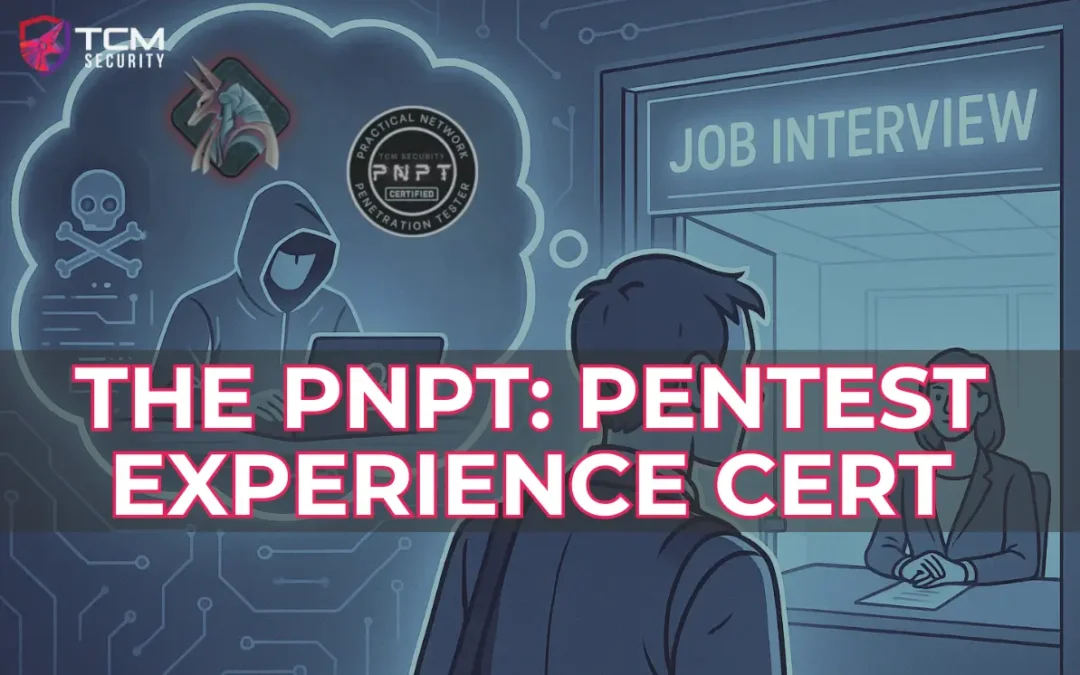
The PNPT: Pentest Experience Certification
The PNPT is designed to provide knowledge and practical experience in penetration testing to help shorten the experience gap for those looking for jobs.

Ethically Hacking LLMs | 1 – Neural Networks
In this first blog in the series, we’re going to learn about the fundamentals of how neural networks and LLMs work to better understand how to attack them.
Issue
The SMB service on the domain-joined endpoint is available to the Internet. This could permit information disclosure of internal network identities (i.e., fully-qualified domain names of internal domains) and accessibility of an external entry point for brute force attacks.
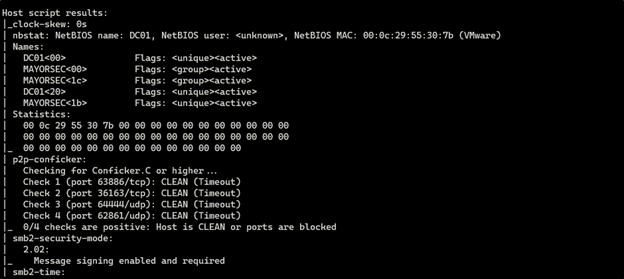
Recommended Remediation
The following outlines the recommended steps that the systems and network administrators should take in order to secure the environment.
Utilizing a user account with administrative privileges, open Windows Defender Firewall with Advanced Security.
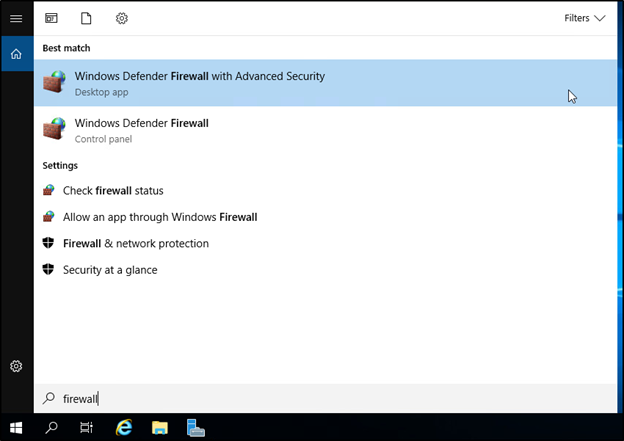
Right-click inbound Rules and select New Rule.
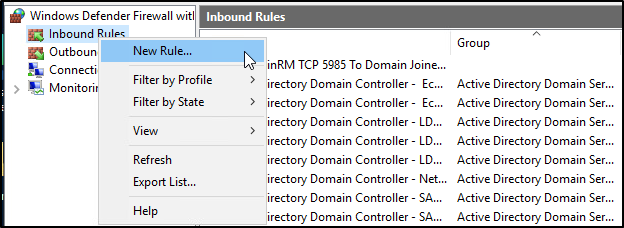
In the Rule Type window, click Port and select next.
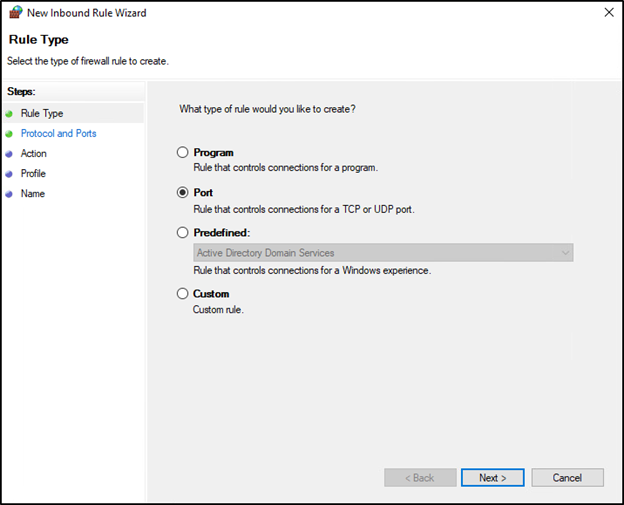
Select the TCP option, and below, the Specific local ports option. Enter ports 135, 139, 445 and click Next.
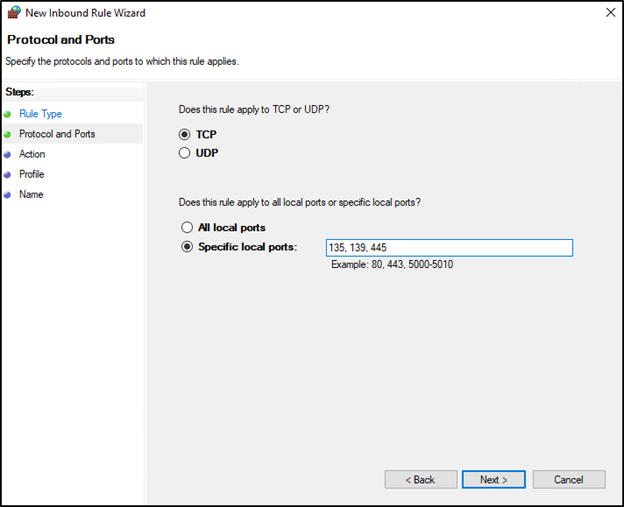
On the next screen, select Block the connection and press Next.
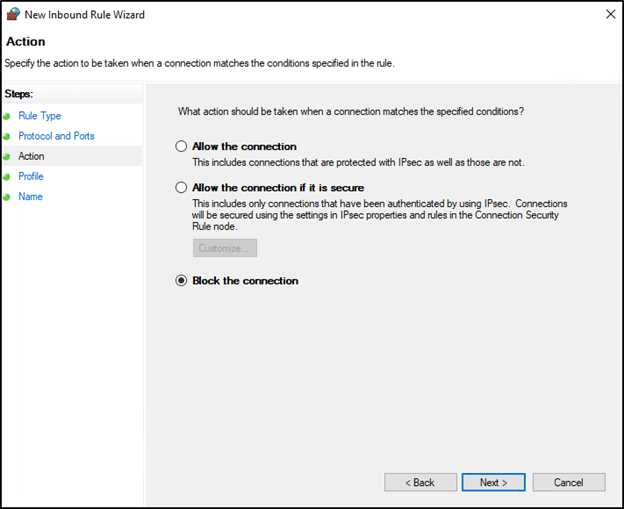
In the next window, deselect Domain and Private, and select Public. If you prefer to only allow domain-connected devices to access the SMB service, deselect only Domain, and select Private and Public. Press Next when complete.
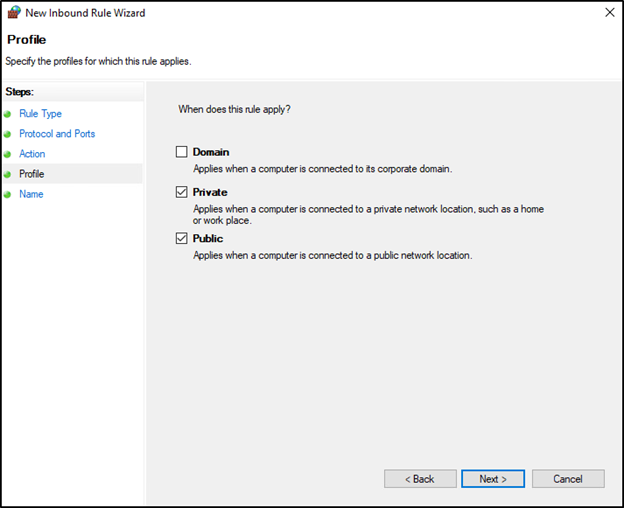
In the next window, specify a name for the new firewall rule, and enter a description if desired. Press Finish when complete.
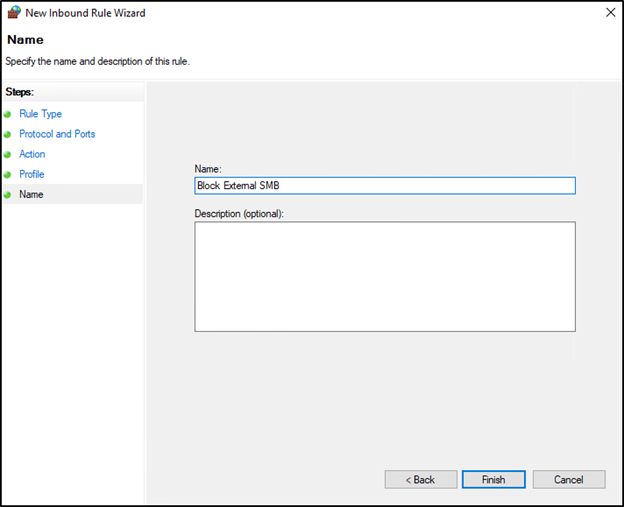

See What We Can Do For You
Download a sample penetration test report to see the results we can deliver for your organization.
See How We Can Secure Your Assets
Let’s talk about how TCM Security can solve your cybersecurity needs. Give us a call, send us an e-mail, or fill out the contact form below to get started.
